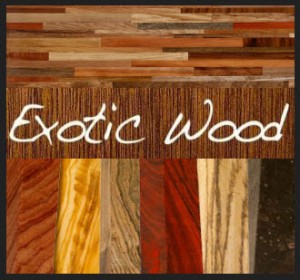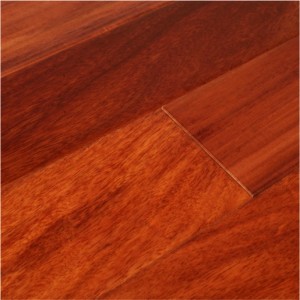We use cookies to make your experience better. To comply with the EU GDPR e-Privacy directive, we need to ask for your consent to set cookies. Learn more.
Exotic Hardwood Species
Now that we've examined the various attributes and qualities of some of the most popular domestic wood flooring species, it's time to see the look and feel you can give to your home, with exotic hardwood flooring. Generally, choosing between domestic and exotic hardwood species can be a challenging decision and in order to identify which one will work best with your overall decoration scheme, is vital to compare them. So before you show up in your local flooring showroom, take some time and review what each of them has to offer.
Why choose exotic hardwood species?
 Image courtesy by: crlumber.com
Image courtesy by: crlumber.com
Exotic hardwood species are popular for their unusual grain patterns and unique color variations that display from board to board. Even though they cost more, they will amaze you with their extremely unique appearance. Additionally, they are much harder than domestic wood species according to Janka hardness scale (hence more durable) and ideal for creating any setting, whether that is elegant, contemporary or formal.
To find out more about the various qualities and characteristics, that some of the best-selling exotic hardwood species possess, read the descriptions below.
Jatoba (Brazilian Cherry):
 Image courtesy by: baytobayhardwood.com
Image courtesy by: baytobayhardwood.com
Jatoba or Brazilian cherry, is the most common exotic hardwood species, used for wood flooring. What makes it extremely popular, is its exceptional hardness and density (scores 2820 on the Janka hardness scale), as well as the extreme color variations that appear within a single board. Its heartwood color varies from salmon red to orangey brown and its sapwood can be either white, grey or pinkish. It has an interlocked grain with a medium to coarse texture and is frequently marked with dark brown streaks. Keep in mind that Jatoba hardwood flooring is very sensitive to sunlight and when is exposed to it, its color tends to darken.
Brazilian Walnut:
 Image courtesy by: theartisanfloors.com
Image courtesy by: theartisanfloors.com
Brazilian walnut, also known as Ipe, is ideal for high-traffic areas due to it's relative high hardness (3680 according to Janka hardness scale). Depending on where it grows, it's color ranges from a light yellowish tan with green tones, to a rich chocolate brown. It has a straight grain combined with irregular patterns, which makes it ideal for those who want to create a highly formal, elegant look for their room.
Bamboo:
 Image courtesy by: bambooflooringprosandcon.net
Image courtesy by: bambooflooringprosandcon.net
Although Bamboo feels and looks like hardwood, is not a timber. In fact, it is a type of grass which grows much faster (4 to 5 years) than any type of hardwood and doesn't have to be replanted once harvested, making it an eco-friendly material. Additionally, it is much harder compared to most hardwoods and it's ability to perform well in humid conditions, make it an ideal flooring choice for basements. Bamboo has a natural soft yellow color and is available in three different grains:
- Horizontal
- Vertical
- Strand-woven
Santos Mahogany
 Image courtesy by: fantastic-floor.com
Image courtesy by: fantastic-floor.com
Santos Mahogany is an extremely hard and dense wood (Janka hardness rating 2200). Its color ranges from a medium orangey brown to a dark reddish brown with gold overtones, that remains constant over time. It has a tight grain pattern, often interlocked and sometimes wavy, with a medium to fine texture. Because of its extremely high hardness, Santos Mahogany is a perfect choice for the busy areas of a house, such as kitchens or hallways and generally it can be used in both commercial and residential properties. Finally, its beautiful visual appearance is ideal for creating an elegant setting to any room.

